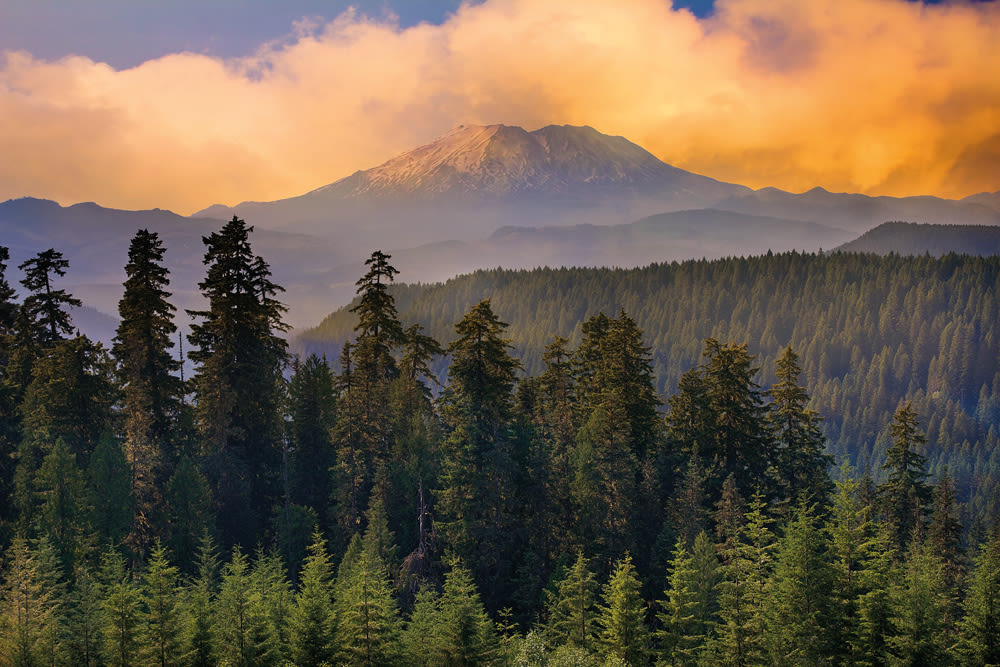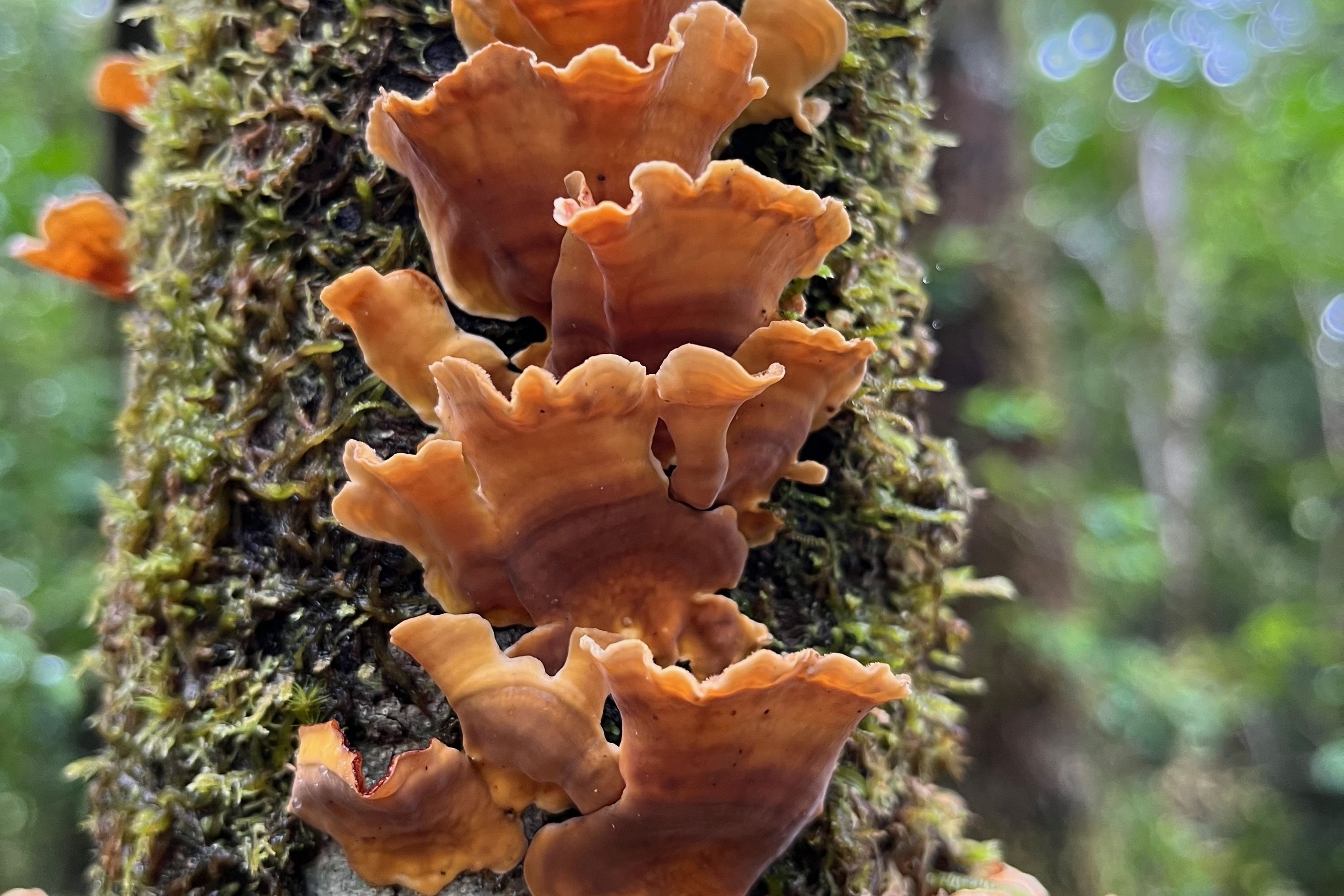On the Anniversary of an Eruption, Mount St. Helens Is a Study in Resilience
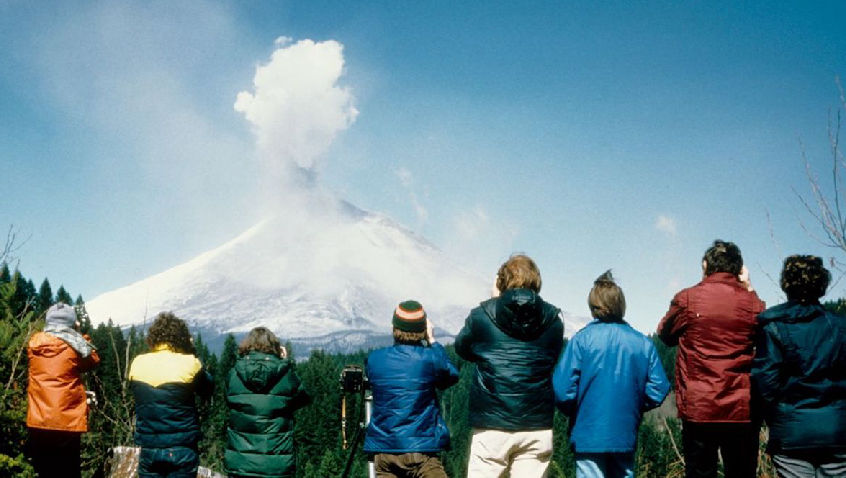
In early summer 1980, onlookers view an ash plume from a still-intact Mount St. Helens.
Image: Dan Miller
Thirty-seven years ago—on May 18, 1980, to be exact—the peak of Mount St. Helens collapsed and exploded sideways with a 330-mile-an-hour blast of hot rock, scorching 230 square miles of forest in less than three minutes. The ash cloud turned day to night across the Pacific Northwest; particulate matter traveled as far as South Dakota.
The devastation captured the world's attention; two years later, the caldera and immediate blast zone were granted status as a national monument by President Reagan, who set aside 110,000 acres as protected federal land.
At the time, the mountain looked like nothing more than a barren wasteland. But 35 years after its national monument status, Mount St. Helens is again deeply alive—evidenced by spring wildflowers, diverse wildlife, throngs of nature lovers, and the occasional lava plume that reminds us of her still-kicking magma core. (We devoted an entire issue to St. Helens in 2014.)
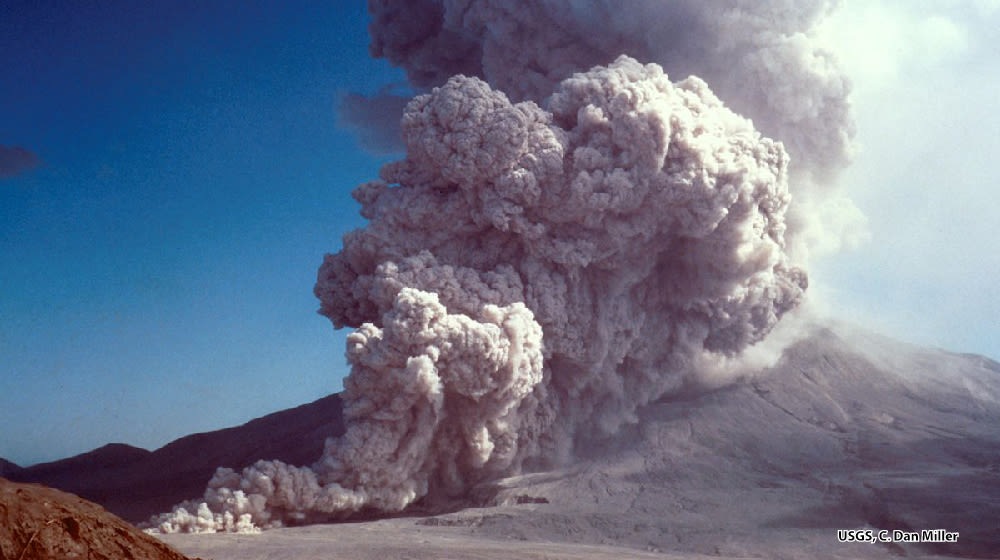
Activity in the new caldera continued months after Mount St. Helens's initial eruption on May 18, 1980. Here, a pyro flow viewed from Johnston Ridge three months later.
Image: Dan Miller
Part of the monument's rapid recovery, as monument scientist Peter Frenzen points out, was due to the eruption's fortuitous timing, as late springtime snowpack helped to protect roots and animals living underground. Frenzen has spent the past 37 years studying the return of wildlife to St. Helens: a topic he explores in in a May 20 talk in Vancouver.
“It takes a long time to get from something to nothing,” he says. “Things needed to gradually get dispersed in by animals. Once that happened, it's kind of like a snowball rolling down a hill.”
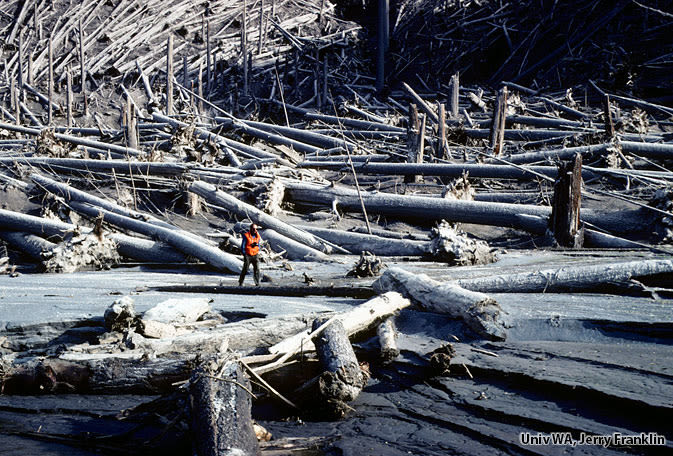
The blast mowed down entire forests. (A scientist, for scale.)
Image: Jerry Franklin
According to Frenzen, St. Helens's recovery started with the arrival of seeds within the first five years; then plants began to sprout within 10–15 years. Today, unlike many other blast zones around the world, St. Helens even boasts small trees and shrubs in many places. "It's covered in wildflowers and absolutely teeming with life," Frenzen says. "It's one of the most biologically diverse and productive ecosystems in the Northwest.”
Frenzen highlights a significant lesson we can learn from this rehabilitation process. “I think we all, myself included, focus on the destructive aspects of volcanoes,” he says. “And it's hard not to do that. They're destructive, but they are also creative. They create lots of different kinds of habitats.” Where humans see loss, nature sees opportunity: a space to grow and take advantage of the ample sunlight.
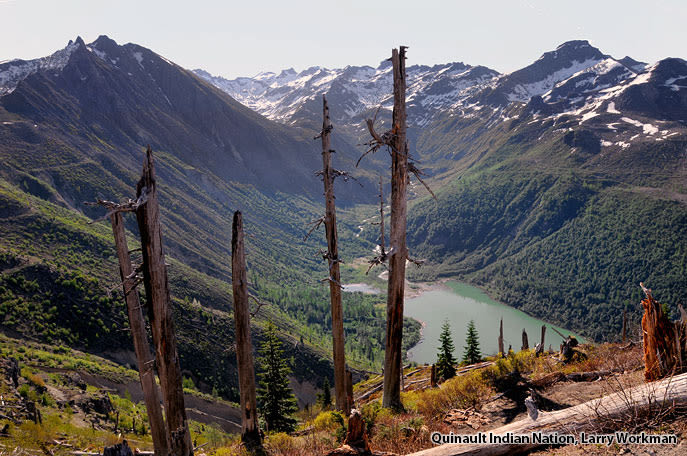
Standing and fallen dead wood have helped create excellent habitat for a resurgent Mount St. Helens.
Image: Larry Workman
When asked if St. Helens could survive another large-scale eruption, Frenzen notes it’s all about the details: timing, size, etc. But given that we live in a rainy climate, “plant heaven” as he puts it, the ecosystem will continue to regrow. “As far as nature is concerned, it's just another chapter in a long story,” he says. “A new habitat is created. Things come and adapt to that environment. Then there's another eruption, and the clock starts again.” Essentially, the area exists on a temporary basis. “Things around it will continue to change. As we say, nature rules in the national monument. All we can do is make sure there is still a space for future generations to enjoy.”
Mount St. Helens: 37 Years of Ecosystem Development and Landscape Change
1 p.m. Sat, May 20, Fort Vancouver Visitor Center, FREE

